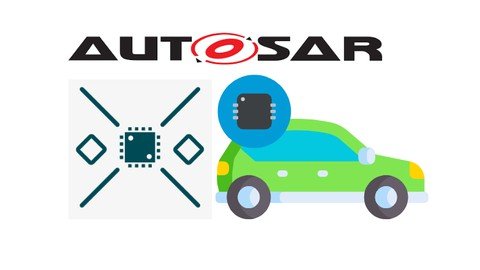
Published 8/2023
MP4 | Video: h264, 1280×720 | Audio: AAC, 44.1 KHz
Language: English | Size: 633.57 MB | Duration: 2h 7m
Learn Autosar for beginners & Intermediate levels. Prepare yourself for SW Jobs in Automotive industry.
What you’ll learn
Introduction to the AUTOSAR World
Understand deeply the AUTOSAR Architecture & Structure
Understand BSW, Application & RTE
Deep look into Memory Stack with configuration
Communication Stack details with configuration
AUTOSAR Virtual Function BUS
RTE & AUTOSAR Application
AUTOSAR Tools in the market
AUTOSAR Documentation
Requirements
Basic knowledge of SW development – No programming skills required
No Automotive SW experience is needed
Description
Autosar is the backbone of SW for Automtive industry. It’s used in all projects in all vehicle systems. It describes how the SW architecture of Automotive projects should follow. Autosar standard solutions are being used by all OEMs & Tier 1 suppliers. These solutions need to be understood, configured, integrated and tested by SW engineers at these companies. Automotive companies hire Autosar experienced engineers immediately, and, as Autosar standards are published for everyone, it’s expected by companies that young engineer should know a lot about Autosar concepts.We are using a simple language, very easy to understand, and with quizzes and engagement you are guaranteed to understand the concepts and memorize it clearly.In this course we will go through: The Autosar fundamentals. explaining its philosophy and motivation. Autosar BSW vs ApplicationAutosar Architecture in depth explaining Layers, Stacks, and Module TypesAutosar Memory Stack with configuration examples (NvM, MemIf, Fee, EA, and Drivers Autosar Communication Stack with configuration examples (Com, PduR, CanIf and CAN)Autosar App with examples (SWCs, Ports & PortInterfaces and Connectors)Autosar RTE (Virtual Function Bus VFB, Runnables, and Events)Tools & References for Autosar (Autosar Website, Davinci, EB Tresos, and SWS Documentation examples)Course is alive with frequent updates to add more topics and exercises to be always up to date
Overview
Section 1: Introduction
Lecture 1 Course Info
Lecture 2 AUTOSAR Introduction
Section 2: AUTOSAR Architecture
Lecture 3 Review of Basic Concepts of SW Architecture
Lecture 4 AUTOSAR BSW Architecture
Lecture 5 AUTOSAR Modules Types
Section 3: Memory Stack
Lecture 6 Memory Stack intro
Lecture 7 NVM & MemIf
Lecture 8 EA
Lecture 9 Fee
Lecture 10 Drivers
Lecture 11 Memory Stack Summary
Lecture 12 Memory Stack Configurations
Section 4: Communication Stack
Lecture 13 Communication Stack intro
Lecture 14 COM | Transmission
Lecture 15 COM | Reception
Lecture 16 COM | Transmission modes
Lecture 17 COM | Callbacks and PDU groups
Lecture 18 COM | Signal filtering
Lecture 19 PDUR | Intro
Lecture 20 PDUR | Routing table
Lecture 21 PDUR | Routing engine
Lecture 22 PDUR | Pdu gateway
Lecture 23 CanIf | Intro
Lecture 24 CanIf | Transmission request
Lecture 25 CanIf | Transmission confirmation
Lecture 26 CanIf | Reception indication
Lecture 27 CanIf | Controller modes
Lecture 28 CanIf | Pdu groups
Lecture 29 CAN | Intro
Lecture 30 CAN | Pdu transmission
Lecture 31 CAN | Pdu reception
Lecture 32 CAN | HW events
Lecture 33 CAN | Mode control
Lecture 34 Com Stack Configuration – Com + PDUR
Section 5: Runtime Environment (RTE)
Lecture 35 RTE Introduction
Lecture 36 RTE and VFB
Lecture 37 Software component
Lecture 38 Port interfaces
Lecture 39 Ports
Lecture 40 Connectors
Lecture 41 The big picture
Lecture 42 Runnables
Lecture 43 Events
Lecture 44 Conclusion
Section 6: Tools & References
Lecture 45 Tools
Lecture 46 Autosar.org
Lecture 47 Autosar Documentation Example
Bigener SW Engineers & Fresh Graduated Students seeking jobs in Automotive Industry,Automotive SW engineer who want to upgrade their knowledge in the industry
Password/解压密码www.tbtos.com